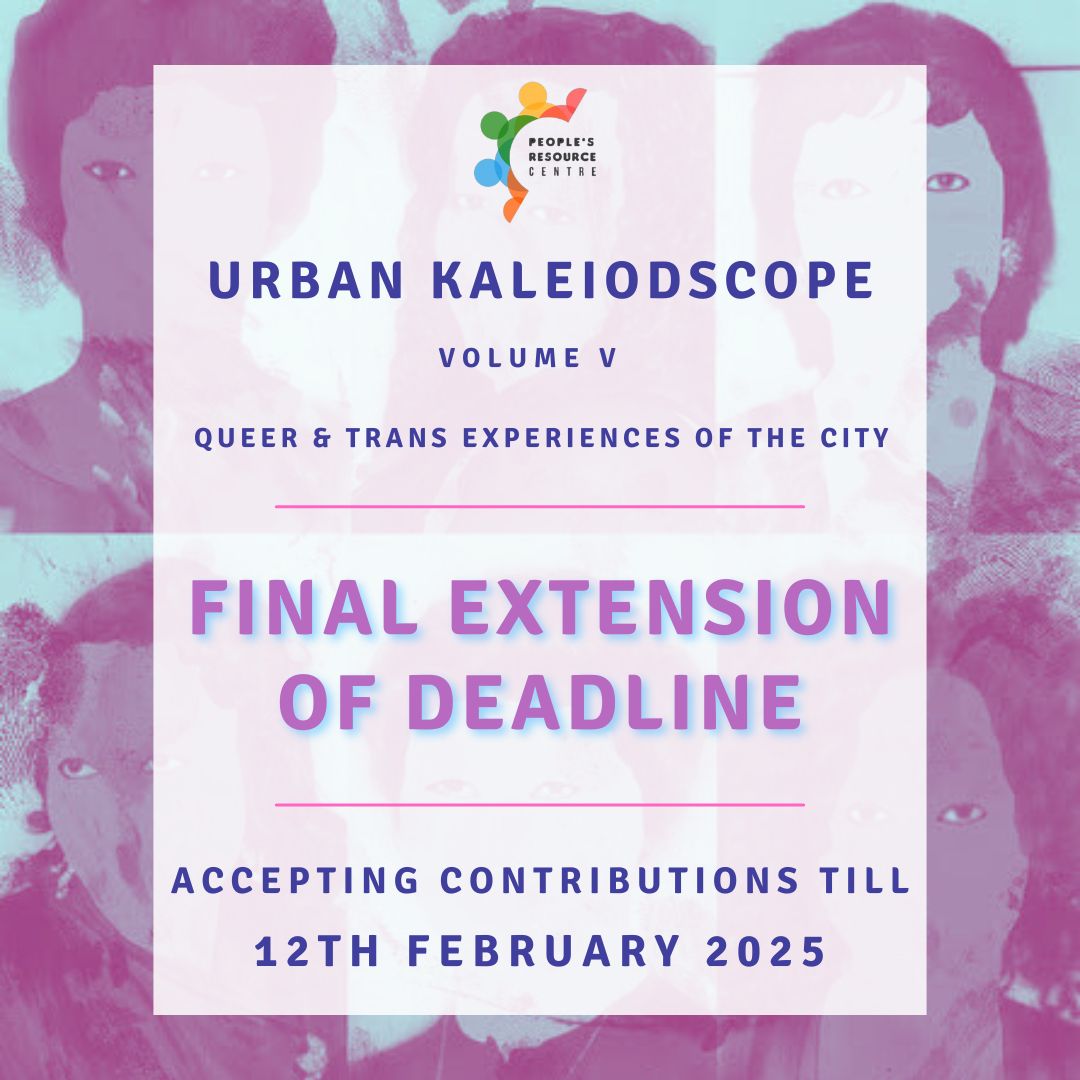Urban Kaleidoscope – 5th Edition
Queer-Trans Experiences of The City
The urban landscape is a kaleidoscope of interconnected elements that come together to form vibrant tapestries of city life. Drawing inspiration from its captivating imagery, “Urban Kaleidoscope” by People’s Resource Centre is a quarterly journal supporting shifting perspectives on cities. By amplifying the voices of citizens, scholars, activist researchers, artists, academicians, professionals, and various community stakeholders, this journal strives to foster critical discourse and cultivate a collective space for the generation of ideas aimed at democratic, sustainable, and inclusive cities.
Through the collaboration of these diverse perspectives, “Urban Kaleidoscope” embarks on a journey of exploration and analysis, shedding light on the complex dynamics of urban existence. More than a platform for alternative visions, policies, and theories, this newsletter catalyzes knowledge creation and resource development for local communities and urban social movements. It aspires to empower individuals and groups, providing them with the tools and information needed to effect necessary change.
The editorial collective is committed to building this journal as a unique, democratic, academic intellectual space that can address the anxieties of our times in a language that speaks directly to those whom the current relations of power leave frustrated on an everyday basis and who share a common interest of recovering the city as a place of enriched communal life in balance with nature.
In this edition of “Urban Kaleidoscope,” we wish to invite entries around the theme “Queer-trans experiences of the city”. The city embodies a certain mythology of “development”, “Growth” and “Freedom” which is experienced in different ways by different groups and communities who find themselves in the complex web of inter-dependence in a city. Queer and Trans folks too experience the city in their subjective ways informed by their caste and class positions and the way it interacts with their queerness. Often while talking about the different bodies in the city, queer-trans experiences are invisiblised.
The city for many represents an aspiration of mobility, many migrate to “The City” for a “Better” life. This is true for most marginalised communities and bodies, the city for them becomes a space for relative anonymity and distance from the structures that govern and police them. What happens when such bodies make it to the city? What are the ways in which they organise themselves? How do they make space in structures that refuse to see them? Is there a possibility of life and flourishing in the city? What are the obstacles to this possibility? There is no one way that queer-trans bodies experience the city, However, these are some questions that we’re interested in exploring through this edition. We invite entries that attempt to look at the various ways in which Queer and Trans bodies experience the city.
We Seek Contributions From:
- Activists, community organisers, researchers, practitioners, planners, academics, and students who identify as Queer.
- Queer writers and artists who wish to share their stories, experiences, and creative expressions related to the theme.
- We also encourage folks from different marginalities from within the community like caste, class, and faith to submit entries.
- In either Hindi or English language.
Submission Guidelines:
Submissions should be compiled in the following order: Title including author name; abstract (150 words) and keywords; introduction and methodology; findings and discussion. Follow in-text citations (as appropriate) and all the figure/table captions should be accurately sourced.
Submissions must follow British English and be typed in a 1.5-spaced A4 page layout with Times New Roman font style (size 12). The article should have accurate Referencing in APA format.
Word count should be a minimum of 2000, not including the abstract and references. The upper limit for the submission should be between 2500 and 3000 words.
For creative submissions, add a paragraph about the work (150 words) in the beginning, and add a caption to all photographs or art. The word limit for creative submissions may vary according to the nature of the submission.
Contributions should not have been published elsewhere, but we operate under a copyleft ethos, allowing articles to be republished elsewhere with author-contributors permission.
Deadline for submission:
Please submit your contributions to urbankaleidoscopeprc@gmail.com by February 12th, 2025. This is the new and updated extended deadline. For queries feel free to write to urbankaleidoscopeprc@gmail.com or prc.india@yahoo.com or dm us on Instagram.

